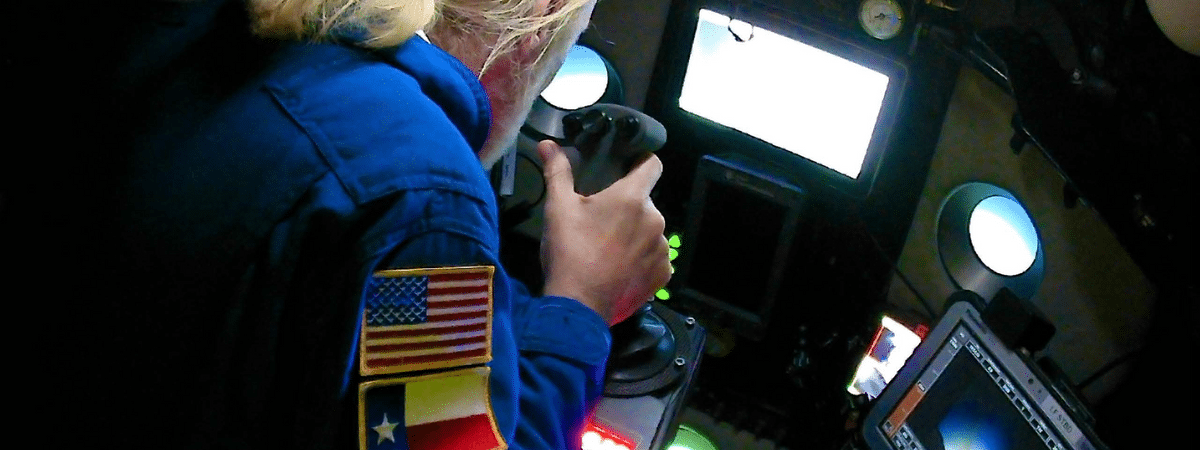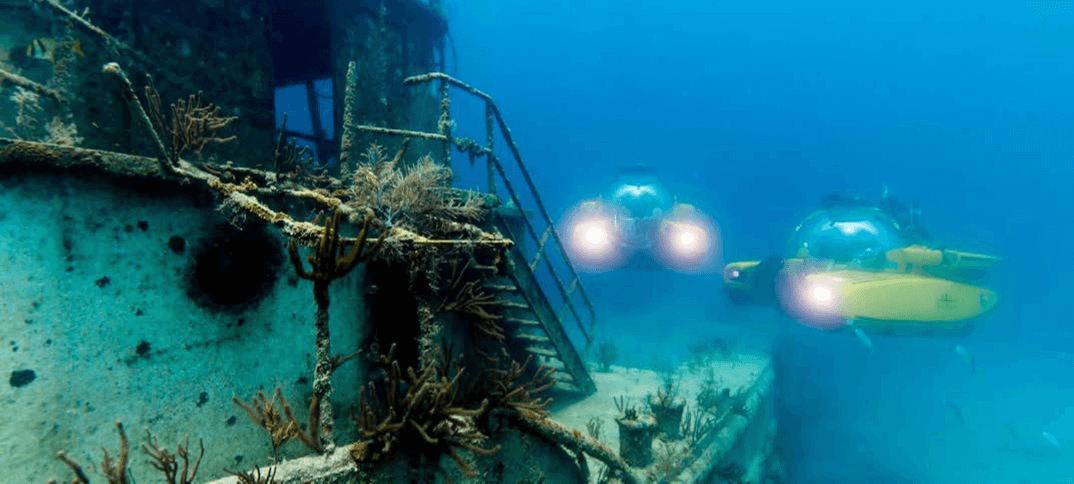Triton Submarines

From tourist submersibles capable of carrying up to 66 passengers, to deep-diving exploration and research models that can travel up to 11,000 meters below sea level, each Triton submarine is designed with a specific mission in mind. In the past decade, Triton has received recognition for the missions they have enabled, as their submarines facilitated the first-ever manned dive recording of a giant squid, the first-ever tagging of a six-gilled shark, and the second manned submersible dive in Antarctica, after Cousteau. These accomplishments are just the tip of the iceberg.
Challenges
Triton Submarines designs and manufactures custom-built submarines for scientific studies and recreational use. In recent years, the company has made news by facilitating visits to the bottom of all five oceans, to the wreckage of the Titanic and several previously unexplored ecosystems deep under the sea. But to make these missions possible, the submarines require computers to facilitate extensive monitoring, tracking and communication in order to conduct successful explorations and keep crews safe. When Triton’s previous computers became outdated and took up too much space on board, a powerful replacement was needed – one with enough processing power to support a submarine’s most integral operations but compact enough to fit into small spaces. Additionally, the scientists and researchers who use Triton’s submarines require scientific data analysis programs and complex control systems, which can only run on top-tier, high-performing devices.
Solutions
Triton Submarines worked hand-in-hand with Mooring Tech* – a valued Panasonic partner – to find a customized solution that would best fit its needs. Ultimately, Triton chose Panasonic TOUGHBOOK devices, finding that the devices’ ruggedness and performance were perfect for MOBILITY Triton Submarines Chooses TOUGHBOOK to Support Its Deep-Sea Exploration supporting deep-sea exploration and scientific discovery. Triton now equips every submarine with two TOUGHPAD FZ-G1 tablets inside the submarine to monitor the depths, lights, voltage, gases, and alarms and to input data, and one TOUGHBOOK 54 on the surface for tracking and communication purposes. Large, clear, user-friendly screens allow those onboard the vessel to view data in the cockpit, while reliable connectivity allows teams to communicate from the submarine to the surface. Integrated GPS systems simplify mapping, allowing teams to plot the location of a vessel in real time which can improve safety. The TOUGHPAD FZ-G1 rugged tablets are significantly more compact than the previous computers installed in the vessels, giving teams on board the space they need to move around freely.
Results
With TOUGHBOOK tablets and laptops, submarine operators and researchers are able to run integral systems from one interface while collecting data and conducting complex scientific research. For missions of all types, teams onboard the vessels and their counterparts on the surface are now able to interact and control systems remotely, including the lights, gases, signals and even television systems within the vessel. For scientific exploration, experts now have the power to run analytics software right from their onboard tablets, facilitating real-time reporting and discovery.
Embarking on complex scientific and recreational explorations requires an ecosystem of technology that can streamline the monitoring, systems control and data collection involved so that teams onboard the vessel can focus on the specific goals of the mission. Triton’s first submarines contained a computer system with monitors that were large (18-20 inches wide and 3 inches thick), ineffective and clunky, often in the way as they were positioned down by the pilot’s knees in the cockpit. The computers they used previously were often subjected to moisture they could not withstand. As a company delivering cutting-edge submersible technologies, Triton needed to upgrade its computer systems to keep up with customer demands.
With two TOUGHBOOK devices on each vessel (and one on the surface), teams can operate submarine systems, collect data and communicate effectively regardless of the vessel’s positioning, allowing teams to be fully prepared for each mission. “Since we began equipping our submarines with TOUGHBOOK devices, we’ve been impressed with their small size and high performance,” says Jim Harris, Operations and Vehicle Development, Triton Submarines.
For exploratory missions, scientists are able to record and save the camera feeds for analysis right on the hard drives of their devices. They can easily connect to their own networks, instrumentation and programs, providing them with the flexibility and integration they need to get their work done. On certain missions, scientists use the onboard TOUGHPAD FZ-G1 tablets to operate additional cameras and tools that measure ocean conditions like conductivity, temperature and density, as well as sonar. These cameras also enable pilots to make sharp, quick turns, steering the vessels away from dangerous conditions or towards areas of exploratory interest.
While the TOUGHPAD FZ-G1 devices are used onboard the vessels to operate systems within the submarine, the TOUGHBOOK 54 laptops, on the other hand, are used by field technicians to support diagnostics and remote communication. In the shops where the submarines are built, engineers often experience poor internet connections, but need to communicate with teams out at sea to share mission reports and collect data. The connectivity of the TOUGHBOOK devices helps overcome these issues and allows engineers and technicians to use the computer to monitor, test, and communicate with teams on land and at sea, as needed. With a long battery life and rugged construction, the TOUGHBOOK 54 laptops are able to operate through long days of submarine design and manufacturing. The TOUGBHOOK 54 enables workers to control functions of the submarine, expediting the manufacturing and troubleshooting process.
The devices onboard the submarines have made recent, groundbreaking explorations possible. OceanX – a mission to “explore the ocean and bring it back to the world” – visited the Coral Canyons, a marine national monument 130 miles from Boston, aboard a Triton submarine. Generally unexplored, the area is expected to have rare, diverse biodiversity and abundant marine species, untouched by humans and holding untapped potential for the scientific community. At the end of the day, TOUGHBOOK devices are purpose-built for work like that of Triton Submarines, enabling exploration, discovery and safe underwater missions. Jim Harris of Triton Submarines says it best. “I would never want a standard computer in the world we work in.”
*Case study produced in conjunction with our valued partner, Mooring Tech
